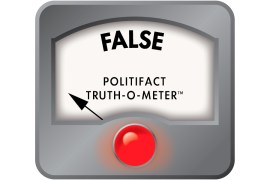Models Show Complex Changes In Payment System, Revenue For Hospitals In Medicare
Modern Healthcare: Health reform has left "industry executives scrambling to project what will happen to revenue and expenses in the coming decade." Some are using models to guess what will happen when payments change for Medicare and Medicaid. "The models, released or under development by trade groups, including the American Hospital Association, Greater New York Hospital Association, and Hospital & Healthsystem Association of Pennsylvania, don't produce reliable projections, but rather a best guess - or many guesses - as healthcare executives themselves plug a number of scenarios into models." Some models for hospital systems are calculating a loss in revenue that could be offset partly by expanded insurance, but even those models aren't certain to be correct. "Instructions for the AHA model caution hospitals repeatedly that its two calculators - one for Medicare and Medicaid payment reductions; the other for coverage expansion - include estimates and omit other factors that could affect projections. Medicare's scheduled reductions tied to productivity hinges on estimates and the AHA did not include further potential cuts tied to quality, such as hospital-acquired conditions or patients who land back in the hospital unnecessarily. Projections for expanded insurance coverage rely on estimates by hospitals for what plans sold through insurance exchanges will pay, and the trade group encouraged hospitals to test a number of results" (Evans, 8/30).AARP Bulletin examines the math used by officials to say the new health law will increase the viability of the Medicare system in the future. "According to Medicare's latest financial report card, released this month, the new law extends the financial soundness of the program by 12 years, to 2029. The annual report, produced by the program's trustees, explains how Medicare can afford to offer benefits longer and produce savings at the same time." The new law doesn't make anyone lose Medicare coverage, and doesn't shrink the program, in fact, it grows enrollment, AARP Bulletin reports. "The savings come from slowing down Medicare's increase in spending, so it goes up an average of 5.8 percent a year over the next decade, instead of 8.5 percent" (Jaffe, 8/30).
This is part of the Morning Briefing, a summary of health policy coverage from major news organizations. Sign up for an email subscription.





